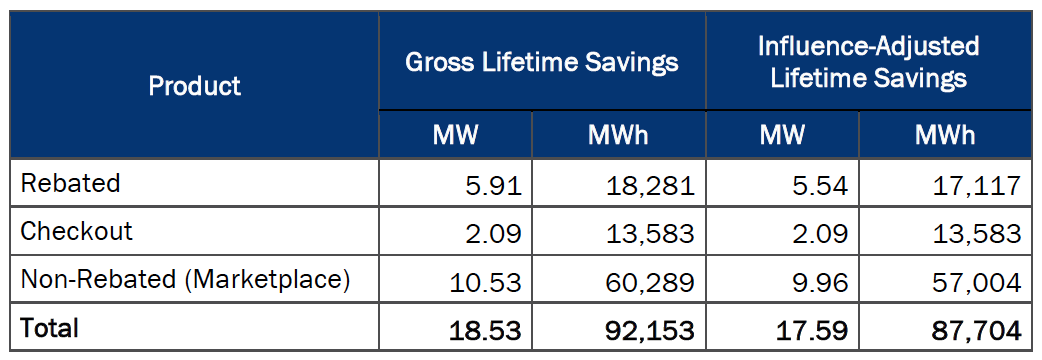The AEP Ohio Marketplace proves that eliminating barriers to private investment in energy-efficient products unlocks significant, cost-effective savings that traditional approaches leave untapped. That’s the key takeaway from the first independent assessment of the utility marketplace, conducted by Opinion Dynamics.
Engaging customers at scale
From January 2018 through March 2019, more than 149,000 active shoppers visited the AEP Ohio Marketplace. Those shoppers purchased over 42,000 energy-efficient products directly through the platform.
These choices add up: the study found lifetime electricity savings of 92,153 MWh and demand reduction of 18.53 MW. That’s equivalent to avoiding 65,156 metric tons of greenhouse gas emissions—similar to installing new wind turbines or removing thousands of cars from the road.
Marketplace model drives the biggest savings
The savings achieved in the non-rebated categories account for more than 65% of overall electricity savings and roughly 57% of demand reductions — and, notably, this was done without incentives.

By removing market and psychological barriers, the Enervee platform empowers shoppers to confidently choose the most efficient products. The Enervee Score makes efficiency visible, while daily retail price updates counter the myth that efficient products always cost more.
Checkout, Enervee’s integrated instant discount tool, added another 15% in savings—making AEP Ohio the first U.S. utility to offer seamless rebates at the point of sale.
Delivering customer and utility value

Customer feedback confirms the marketplace’s impact. 78% of AEP Ohio customers said they’re likely to recommend the platform, with 27% extremely likely. Beyond purchases, 58% reported a more favorable opinion of their utility thanks to the marketplace experience.
That trust matters. By providing transparent product data, actionable advice, and integrated savings, AEP Ohio strengthens its role as a trusted advisor while cutting customer energy bills at scale.
Evidence for decision-makers
“We urge Ohio decision-makers to take note of these results,” said Enervee CEO Matthias Kurwig. “Even without incentives, AEP Ohio has empowered its customer base to make better buying decisions, capture gigawatt-hour-scale savings, and cut waste and bills.”
The AEP Ohio Marketplace assessment adds to a growing body of evidence that market-based utility marketplaces can deliver gigawatt-hour scale savings, strengthen customer relationships, and contribute meaningfully to climate goals—all while lowering program costs.
The AEP Ohio Marketplace assessment adds to a growing body of evidence that market-based utility marketplaces can deliver gigawatt-hour scale savings, strengthen customer relationships, and contribute meaningfully to climate goals—all while lowering program costs.
Explore how Enervee builds utility marketplaces
www.enervee.com/utility-marketplace →